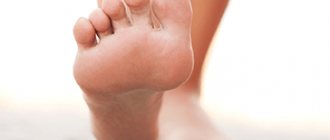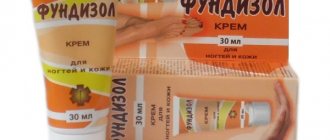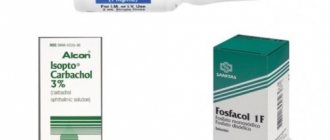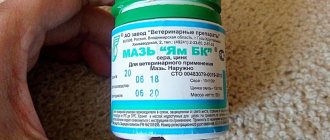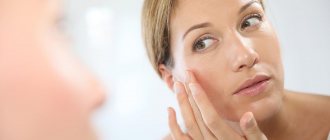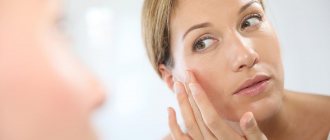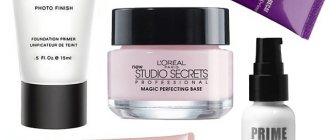Few people know that skin diseases can be successfully treated with ASD-2. Dermatitis, eczema, and lichen are quite common today. Many of them are not only accompanied by painful symptoms, but are also difficult to treat. They also cause aesthetic discomfort, as they are often localized in prominent areas of the body.
ASD will help in the fight against various ailments of the dermis, both inflammatory and bacterial and infectious in nature. What ailments does the elixir treat, and how to use it? Let's talk about this.
ASD-3 reanimates the skin
The third fraction ASD drug is effective in the fight against many diseases of the dermis. It is effective in the fight against fungal infections, sluggish and long-term non-healing wounds, inflammatory processes, eczema, psoriasis, dermatitis, fistulas, and demodicosis.
This product, unlike ASD-2F, is intended exclusively for external use. It is used to treat affected areas of the skin and is used for compresses and rinses. There are several options for using the third fraction antiseptic stimulant, depending on the disease. The standard regimen for using the drug is as follows.
ASD fraction 2 for facial skin
The medicine promotes cell regeneration and rejuvenation of the body. For external use, you can use fraction 3, but this product is very aggressive and should be mixed with vegetable fats.
ASD for facial skin standard application scheme for fraction 2:
- 30 drops per 100 ml of cold and boiled liquid:
- twice a day before meals 30 minutes;
- The reception lasts for 5 days.
Then they pause for 3 days.
The product can be used in cosmetology. To do this, you need to choose the right cream, preferably for children. It is necessary to add a few drops of the drug to the cream, stir and rub into the skin of the face until completely absorbed. The result is a unique and inexpensive skin care product. It is well absorbed into the skin of the face and provides excellent care for skin where there is a rash or acne.
Standard application scheme
- Every day, after pre-treating the affected area of skin with 3% hydrogen peroxide or a weak solution of potassium permanganate, apply a gauze pad soaked in a 20 or 50% oil solution (depending on how advanced the process is).
- The best oil is olive oil, but it is possible to use sunflower oil that has been purified and boiled in a water bath.
- Parchment paper is placed on top of the napkin with the oil mixture, then a thick layer of cotton wool, after which the compress is fixed with a bandage.
- The procedure is carried out 1-2 times a day, until the tissues are completely healed and complete recovery.
What diseases are treated with drugs?
ASD fractions 2 and 3 are used not only for psoriasis, but also for many other diseases:
- fungal nail infections;
- gynecological pathologies (endometritis, colpitis, trichomoniasis);
- wounds and fistulas;
- demodicosis;
- phlebeurysm;
- eczema;
- trophic ulcer;
- dermatitis of various origins;
- acne rash;
- bedsores;
- oncological pathologies (melanoma, breast cancer).
These medications are used both internally and externally. The course of treatment usually lasts several weeks, and therapy lasts 5-6 days a week, after which a break is taken for 1-2 days, and the cycle is repeated.
Important! ASD for psoriasis is used as an additional treatment. Do not neglect the main course approved by your doctor. It is also advisable to perform additional procedures - regular showers with medicinal cosmetics, the use of gel and other skin products.
Summary table of regimens and dosages for the treatment of various skin pathologies
Depending on the ailment, the method of application of the composition, regimen and dosage may vary slightly. Options for using the medicine for skin diseases can be seen in the table.
| A drug | Disease | Way | Scheme | Dosage | Well |
| ASD-3F | Fungal infections | Treatment of affected areas | 3 times a day | The drug in its pure form | Until complete recovery |
| ASD-3F | Acne, bedsores, dermatitis, eczema, chronic inflammatory diseases | Treatment of affected areas, including 2mm of healthy skin | 2-3 times a day | 20% oil solution (for mild lesions) and 50% solution for severe lesions | Until complete recovery |
| ASD-3F | Demodicosis | Treatment of affected areas | 2-3 times a day | Ointment: 1 teaspoon ASD-3, 1 tablespoon Vaseline. | 7 days, 2 weeks break, 7 days |
| ASD-3F | Psoriasis | Lotions | 2-3 times a day | 2% solution in oil | Until symptoms resolve |
| ASD-3F | Non-healing wounds and fistulas | Lotions | 1 time per day, at night | 20 - 50% solution in oil | Until complete recovery |
Composition and indications for use
ASD ointments are a group of products that contain a mixture of biological substances from the ASD-2 and ASD-3 fractions. These components were obtained back in the late 1940s. Soviet scientist A.V. Dorogov. Since they have antiseptic properties and activate metabolism, the researcher gave them the name “Dorogov’s antiseptic stimulant” (abbreviated as ASD).
The mixture contains various organic and inorganic compounds:
- carboxylic acids;
- amines;
- aromatic hydrocarbons;
- esters;
- choline etc.
They easily penetrate cells and are almost completely absorbed by the body, due to which the therapeutic effect occurs within a few days. Therefore, ointments of the ASD fraction are used to treat various diseases. So, the indications for the use of Dorogova balm are as follows:
- wounds and fistulas;
- eczema;
- trophic ulcers;
- pustular lesions;
- dermatitis of various origins;
- psoriasis;
- acne;
- bedsores;
- xerosis;
- inflammatory diseases.
Isida cosmetics are used not only for treatment, but also for the prevention of skin diseases. It has a rejuvenating and healing effect due to the following properties:
- activation of collagen synthesis;
- improvement of dermal metabolism;
- destruction of free radicals leading to skin aging;
- cleansing tissues of pathogenic microorganisms.
In the production of Isis ointments, innovative technologies are used - medicinal substances are contained in special bubbles - liposomes. They penetrate the skin tissue and deliver substances, evenly distributing them between cells.
Fig.2. Thanks to liposomes, medicinal substances are not destroyed, but are completely absorbed by skin cells, which gives the maximum therapeutic effect.
Effect of antiseptic stimulator ASD-3 on the skin
ASD-3F has a pronounced anti-inflammatory, regenerating, analgesic, antifungal, wound-healing, antibacterial and antiseptic effect. The use of the composition for the treatment of skin ailments promotes:
- increasing the protective properties of the skin;
- improving the functioning of the reticuloendothelial system;
- improvement of tissue trophism, metabolism;
- destruction of pathogenic microflora;
- eliminating painful sensations;
- minimizing the inflammatory process;
- healing, regeneration of affected tissues;
- preventing cell oxidation;
- increasing the protective qualities of plasma membranes, accelerating the biosynthesis of new substances and metabolic processes.
The medicine easily overcomes tissue barriers. It is completely natural and therefore safe. ASD-3 can be used externally even during pregnancy and childhood. The elixir has no contraindications or side effects; it has an extremely beneficial effect on the body.
Answers to common questions
Question No. 1. Where can I buy medicines?
Dorogovaya balm can be purchased on various Internet sites, for example, https://www.vetmag.ru and in pet stores. Sold at a cost of 200-300 rubles for 1 package of 100 ml. Aisida cosmetics can be ordered on the website https://www.aicida.ru/ and in a network of pharmacies - for example, Asia in Moscow or Violet in St. Petersburg. ASD ointment fraction 3 can also be purchased on websites, the cost is 25 hryvnia per 1 piece (about 60 rubles).
Question No. 2. Can the products be used by children and pregnant women?
Yes, since there are no contraindications for use. However, it is advisable to consult your doctor first.
Features of external use of the third fraction
Before you begin to treat a specific ailment with a drug, you should familiarize yourself with several important recommendations.
- If the damage to the skin is large-scale, no more than three areas can be treated at a time.
- If the undiluted drug comes into contact with healthy tissue in large quantities, immediately rinse the dermis. This will help prevent burns and skin irritation.
- Treat wounds or apply compresses and lotions only after first cleaning the wound surfaces.
- If redness of the dermis appears during the course, stop treatment for three days.
- Ingestion of ASD-3F is not allowed. This fraction is endowed with phenolic compounds, methenes and pyridine bases, which can negatively affect the functioning of the urinary system and liver.
- When selecting the required amount of elixir, wear protective rubber gloves.
- After the procedure, wash your hands and face with warm soapy water.
- If the product gets into your eyes, rinse them with plenty of water.
- During the treatment course, refrain from drinking alcoholic beverages.
Antiseptic stimulator of the third fraction is one of the few safe and most effective means for the treatment of dermal pathologies. Unlike most medications, it has an extremely beneficial effect on the body. The main thing is to observe dosages, adhere to recommendations and not interrupt the course of treatment.
Correct Application
The ASD faction does not like light and air. It must be stored in a cool and dark place. The medicine is used only diluted with boiled water. Children can be diluted with grape juice or milk.
The drug has a peculiar odor and disappears quickly. Therefore, it cannot be opened completely. You just need to remove the metal cap. The kit is made with a needle and a disposable syringe. Before this, the medicine is shaken. The product is injected very slowly into the liquid and used only on an empty stomach.
INTERESTING fact: ASD fraction 2 for use in metastases
The medicine has no special contraindications, and no special diet is provided. It is advisable to consume foods containing protein. Individual intolerance is possible. The only thing that adherents of this treatment have noticed is that the blood thickens greatly. Therefore, you should eat more sour fruits and drink as much liquid as possible, up to 2 liters.
The medicine is considered a powerful stimulant. Not recommended for people with problems with the psyche, cardiac and vascular system, and kidneys.
Despite all its positive qualities, the medicine does not have the status of a medical product, and is officially used only in veterinary medicine. The drug is not expensive and safe, which makes it popular in treatment with unconventional methods.
Be healthy!
The use of drugs containing ASD in the treatment of acne
Klyuchareva S.V., Nechaeva O.S., Sliva E.I. Department of Dermatovenerology, State Budgetary Educational Institution of Higher Professional Education, North-Western State Medical University "St. Petersburg State Medical University named after. I.I. Mechnikov" Ministry of Health and Social Development of the Russian Federation
Active promotion of a healthy lifestyle, which, along with the requirements for maintaining physical and general somatic status, pays increasing attention to the state of a person’s external appearance, dictating aesthetic canons and standards, among which, in the first place, are the requirements for external attributes - the condition of hair, teeth, skin, especially on exposed areas of the body. An integral part of the image of a successful person, predisposing to trust, is his attractive appearance, which indicates not only concern for one’s own health and a certain level of material well-being, but also, on an unconscious level, convincing others of the high moral, ethical and cultural qualities of its owner.
Therefore, a person’s desire to have a pleasant appearance is quite natural, since this corresponds to his aesthetic needs, which, as we know, are social in nature. The presence of a cosmetic defect on the face, manifestations of age-related changes, acne and post-acne, often causes emotional tension, increased excitability, irritability, up to the development of a pronounced complex of one’s own imperfections. Therefore, aesthetic correction of skin defects has both medical and socio-psychological significance.
Among patients aged 18-45 years, the most common complaints are cosmetic defects on the face associated with acne. These can be manifestations of both an inflammatory nature and post-acne.
Acne vulgaris
- a chronic disease that has a clearly traceable genetic predisposition, one of the manifestations of dense or mixed forms of seborrhea, or a disease of the hair follicles and sebaceous glands.
Early manifestations of acne consist of pathological hyperkeratosis of the follicular epithelium, which leads to blockage of the follicular duct by the horny mass and the formation of microcomedone. Comedones, like plugs, clog the mouths of enlarged hair follicles. Excessive production of sebum and disruption of the outflow of sebaceous gland secretions from the hair follicles create conditions for the proliferation of propionbacteria and the development of the inflammatory process.
Depending on the localization of inflammation, papules, pustules, indurative and spherical (conglobate) acne are formed.
Papular acne is represented by clinically pink nodules with a diameter of 2-5 mm, hemispherical in shape, with a comedon at the apex. Subsequently, a pustule appears in its place. Inflammatory phenomena increase, pain occurs. After regression, stagnant bluish spots or small scars form in place of the pustules.
Taking into account the described mechanism of acne development, it is important to consider the inflammatory process from the point of view of microcirculation disorders, which is one of the main links in the pathogenesis of this pathology.
Normally, the microvasculature (MCB) consists of repeating functional units-microregions (modules). Each of these units is a complex system consisting of arterioles, precapillaries, capillaries themselves, postcapillaries, venules, lymphatic capillaries and postcapillaries, nerve conductors, and interstitial substance. There are multiple anastomoses between the microvessels. In the places where they originate in the circulatory section of the MC there are groups of smooth muscle cells that form sphincters.
This entire complex provides and maintains metabolic and hemodynamic homeostasis in the microdistrict. Each module is separated from the neighboring one and has isolated paths for blood delivery and outflow.
Skin vessels have the ability to quickly and variedly respond to the action of certain stimuli, which is based on the phenomena of vasoconstriction and vasodilation caused by vasomotor nerves. To a greater extent, this applies to areas of the skin where there are a large number of arteriovenular anastomoses (face). Where there are none or few of them, vasodilation and vasoconstriction are caused by the state of basal vascular tone.
In acne, the initial hyperemic reaction of the skin is gradually accompanied by stagnation of blood in the venules and spasm of the afferent vessels, followed by the development of microangiopathies and blood stasis.
It must be emphasized that the progression of acne is characterized by dynamic changes in the vessels of the MCR. Already at the early stages of the disease, compensatory and adaptive processes develop in the form of opening of existing MC networks, the formation of intervascular anastomoses, and an increase in the number and expansion of lymphatic terminals. This ensures adequate vascularization, gas exchange in tissues and removal of metabolites. With a long course of the disease, a significant reduction of the capillary network, restructuring of post-capillaries and venules, and their dystonia are observed, which play a significant role in the development of hemodynamic and metabolic disorders.
Thus, one of the principles that can ensure the success of acne treatment can be considered the effect on these pathologically altered vessels, which can radically affect the morphofunctional state of microcirculation in inflammatory areas of the skin.
There are various methods of influencing these pathogenetic factors in the development of acne. These can be physiotherapeutic procedures (microcurrents), high-energy laser effects (selective lasers with a wavelength of 578-600 nm); in the formation of post-acne, collagenolytic external preparations (longidaza, contractubex, mederma) are added to these methods. But at the present stage of development of medicinal substances, it is necessary to give them optimal properties and forms that penetrate into the cell and conduct active substances into the deep areas of the intercellular space. Currently, it is believed that these properties are possessed by gels, which are, in fact, one of the colloidal forms, such as lipid bilayers, biological membranes, micelles and liposomes, in the creation of which sufficient experience has been accumulated in the world. Possessing exceptionally small sizes (20-30 nm), liposomes are “microcontainers” of phospholipids and are the most convenient, physiological enhancer capable of carrying out rapid and deep transepidermal transport of hydrophilic (inside the liposome) and lipophilic (outside the liposome) compounds into the deepest layers (like fatty ointments), due to its high affinity with living cells. This eliminates the need to use surfactants and irritants, which is important for people with sensitive skin.
Thus, a drug that meets the following requirements can be considered truly effective, safe and applicable for long-term use as a supportive local remedy during the period of subsidence of acute symptoms of the disease and post-acne symptoms:
- ensure free transport of active substances into the intercellular space and into the cell, without destruction of cell membranes and extracellular structures;
- do not disrupt the structure and homeostasis of the lipid barrier;
- restore collagen structure;
- normalize skin microcirculation.
- The new domestic drug “Aisida” has these properties.
The active ingredient in the Aisida treatment line is a component of ASD (Dorogov's antiseptic stimulant). Created back in 1948, it is a product of thermal breakdown of cattle bone tissue and the organic substances they contain (proteins, fats, carbohydrates, nucleic acids) into low molecular weight components, similar in structure to the cells of a living organism. Enclosed in a liposomal form, which ensures targeted transport of the active substance into the deep layers of the skin, the intercellular space and into freely passing cell membranes, the biologically active components contained in ASD (methionine, creatinine, choline, serotonin, etc.) stimulate the formation of enzymes (glutathione) , mediators (methyl mercaptan) and information proteins. This leads to stimulation of the synthesis of own collagen and elastin and repair of skin cells. Low molecular weight components of ASD: asphaltenes (inhibitors of radical reactions); decan (an intermediate product in the synthesis of esters, alcohols, ketones, a participant in oxidation-reduction processes, the synthesis of vitamins, fatty acids, lipids, carotenoids); toluene (participant in the synthesis of aromatic hydrocarbons and their derivatives, which have bactericidal and bacteriostatic properties); acetic acid (an intermediate metabolite that performs a structural and energetic function in metabolism, an active structural component of Coenzyme A, involved in the synthesis of dicarboxylic and tricarboxylic acids, ketone bodies, sterols, ubiquinone, acetylcholine biosynthesis) provides antiallergic, moisturizing, anti-inflammatory, improves microcirculation and antioxidant effects.
In addition to ASD, Isisa contains the following active components: glycerin, olive oil, lecithin, lavender essential oil, especially highly purified water with silver ions in various proportions and concentrations. Selectively supplemented with components such as oil extract of linden flowers, essential oil of Schisandra chinensis, cocoa butter, natural extract of birch buds, complex of vitamins (A, D, E, F), they made it possible to create various forms - “cream for dry and sensitive skin”; “cleansing milk”; "hand cream"; “eyelid cream”, “cream for oily and combination skin”, “balm for problem skin” and thus form a whole line of medical and cosmetic products under the general name “Isis”.
Materials and research methods
We observed 88 patients, of whom 18 (20.5%) were men and 70 (79.5%) women, aged from 18 to 47 years. The duration of the disease varied from several months to 7 years. Mild severity was observed in 28 (32%) patients, moderate in 34 (39%), severe - in 21 (24%), post-acne - in 5 (5%). Patients of the main group (n = 88) were prescribed Isida cream externally 2 times a day on cleansed skin for a period of 1 to 3 months. depending on the severity of the disease. No other external therapy was prescribed. Internal therapy was prescribed for moderate and severe acne: antibacterial, detoxification. For post-acne - vitamin therapy. The effectiveness of therapy was assessed by the clinical picture (counting the number of inflammatory elements) and the state of microcirculation (this was especially important for post-acne).
The state of skin microcirculation was assessed using laser Doppler flowmetry (LDF). The studies were conducted before and after the course of treatment in 1, 2, 3 months.
Results and discussion
Before treatment, all patients (according to LDF data) had microcirculation disorders (MC) of the vasodilatory type (30.2%) detected in the lesions (30.2%), manifested by an increase in arteriolar tone, observed mainly in the papular form. In 61.5% of cases - spastic-congestive type, manifested by increased arteriolar tone, the presence of pronounced congestion in the venular part of the microvasculature and stasis at the level of capillaries. These changes were observed in patients with papular and pustular stages. Atonic-stagnant type (8.3%), which was expressed in a decrease in the myogenic and neurogenic tone of arterioles, congestion in the capillary section of the microvasculature. Similar microcirculatory changes were detected mainly in patients with post-acne. Summarizing the results of the identified changes in microcirculation in patients with acne, we can assume that the formation of these disorders is an important link in the pathogenesis of the disease and contributes to the persistent course and formation of post-acne. The criteria for assessing the effectiveness of treatment in patients with acne, in addition to the dermatological status, included such indicators as the percentage of recovery and stable remission, the duration of treatment required to achieve the latter, as well as the normalization of MCs in the lesions. Resolution of lesions and normalization of MC indices in lesions were taken as clinical recovery. Significant improvement was noted in the absence of new rashes, a decrease in the affected area and the number of rash elements by more than 50%. An improvement was defined as a change in the above-mentioned clinical criteria of less than 50%. Without dynamics - no improvement in the clinical picture and functional state of the studied systems. As a result of a comprehensive analysis of the dynamics of the dermatological status and indicators of functional studies, the following was revealed: in the group of patients with mild, moderate, severe and post-acne who received a course of external preparation of the cream "Aisida", clinical recovery was detected in 67.8%, 52.9% , 38.7% and 25.0% of cases, respectively; significant improvement - 28.6%; 41.2%; 48.4% and 50.0%).
Analyzing the dynamics of MC changes using LDF, it was possible to register the physiological response of microvessels to the effect of the drug “Aisida”. With the vasodilatory type, the initially increased arteriolar tone decreases by 20% (p
Conclusion
With the external use of Isis cream, already in the second week, most patients showed a significant decrease in the severity and number of acne lesions compared to the baseline. At the end of the treatment period, acne clearance rates for noninflamed and inflamed lesions were 63% and 50%, respectively. One month after treatment, the reduction in acne for non-inflamed and inflamed lesions was 79% and 74%, respectively, with a further reduction two months after the last treatment (85% and 87%, respectively). The total number of noninflamed and inflamed lesions after 3 months was reduced by approximately 90% compared with the initial level. In most cases, improvements were sustained throughout the study period. No unwanted side effects were observed. Normalization of microcirculation in the lesions gives reason to expect a longer and more stable remission.
Source: Journal “Clinical Dermatology and Venereology”, No. 4/2012


